What an Artificial Intelligence (AI) Benefits in Today’s World
 Benefits in Today’s World.png)
What an Artificial Intelligence (AI) Benefits in Today’s World
Over the past few decades, Artificial Intelligence (AI) has received several buzzes. However, it is still one of the top technology trends due to tremendous impacts on our lifestyle, workspace and games.
AI has proven dominance in personal assistants (Alexa, Siri and Google Assistant), image and speech recognition, ride-sharing apps (Uber, Ola, Lyft and more) and navigation apps (Google Maps, Apple Maps).
Between the years 2019 and 2020, AI practitioners' or specialists' recruitments were seen to increase by 32%, and in LinkedIn's emerging job report 2020, the role of an AI specialist was ranked #1.
This tech trend needs profound knowledge of statistics, helping us to identify the outcomes generated by the algorithm for a particular dataset.
Some of the highest-paying jobs in the AI field include AI Architect, Robotics Scientists and Big Data Engineering.
What AI Actually Means?
When time traveled to the 1950s, Minsky and McCarthy described the tech trend as any task executed by a machine that was previously considered to need human intelligence.
However, according to modern definition, AI is the ability of a digital computer to execute tasks that are associated with skillsets. It is often applied to the developing system projects invested with the intellectual method characteristics of humans like the potential to reason, identify insights, or learn from prior experience.
The History of AI
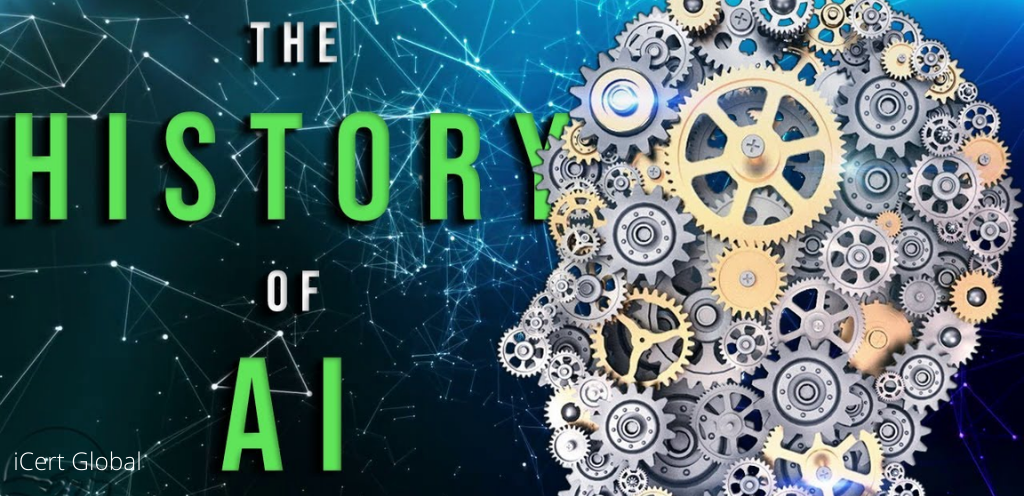
Artificial and intelligent bots first appeared in ancient Greek myths of Antiquity. Aristotle's syllogism development and its use of deductive reasoning was a crucial point in a human's quest to gain insights into its own intelligence.
Following are significant event timelines in AI:
1943 - 1949
In 1943, Walter Pits and Warren McCulloch released 'A Logical Calculus of Ideas Immanent in Nervous Activity,' the first work on AI in that year. The paper suggested the first mathematical model for developing a neural network.
In 1949, in his book 'The Organization of Behavior: A Neuropsychological Theory, Donald Hebb proposed that neural pathways are developed from experience and connections between neurons become firmer the more frequently they are used.
1950 - 1959
In 1950, Alan Turing published a theory 'Computing Machinery and Intelligence' proposed a test called Turin Test that identifies whether a machine has the potential to exhibit human behaviour or not. The same year, Marvin Minsky and Dean Edmonds, Harvard graduates, developed their first neural network computer named SNARC.
In 1952, Arthur Samuel built a self-learning algorithm to play checkers.
In 1954, the Georgetown-IBM machine translation test automatically translated 60 Russian sentences into English.
In 1956, Allen Newell and Herbert A. Simon developed the first AI program called Logic Theorist that verified 38 of 52 math theorems, followed by discovering new and more proofs. The same year, AI was first adopted by John McCarthy at the Dartmouth Conference, which defined the scope of AI, and is widely considered the birth of tech trend as we know it now.
In 1958, John McCarthy built the AI programming language - Lisp and published 'Programs with Common Sense.'
In 1959, J.C. Shaw and Newell and Simon created the General Problem Solver (GPS) - designed to mimic human problem-solving. The same year, Herbert Gelernter created the Geometry Theorem Prover program, Arthur Samuel coined Machine Learning (ML) while at IBM, and McCarthy and Marvin Minsky founded the MIT AI Project.
1963 - 1969
In 1963, McCarthy established the AI Lab at Stanford.
In 1966, Joseph Weizenbaum developed the first-ever chatbot - ELIZA.
In 1969, the first successful proficient systems were created in DENDRAL, a XX program, and MYCIN, developed to determine blood infections, were made at Stanford.
1972 - 1980
In 1972, the PROLOG, a logic programming language, was created. In Japan, the first humanoid bot - WABOT-1 was built the same year.
From 1974 to 1980 was known to be the first AI winter period, where researchers couldn't pursue their studies to the best extent as they were short of funds from the govt, resulting in a gradual decrease of AI interests.
In 1980, AI came back with much greater force. The first successful commercial proficient system - R1, was developed by Digital Equipment Corp. The same year, the national conference of the American Association of AI was organized at Stanford Univ.
1982 - 1997
In 1982, the Japan Ministry of International Trade and Industry introduced the 5th Gen Computer System (FGCS) project for developing supercomputer and AI development platforms.
From 1987 to 1993, AI entered the second winter period; as an emerging computer tech and inexpensive alternatives, investors and the govt stopped funding for AI research.
In 1997, the machine took a significant twist, with IBM's Deep Blue defeating world chess champion - Gary Kasparov, thus becoming the first computer to do so.
2002 - 2020
In 2002, The introduction of vacuum cleaners made way for AI to enter our households.
In 2005, an autonomous car - STANLEY won the DARPA Grand Challenge. The same year, the US military started investing in robots like iRobot's PackBot and Boston Dynamics' Big Dog.
In 2006, tech giants such as Google, Netflix, Facebook and Twitter started leveraging AI.
In 2008, US tech giant - Google made an innovation in speech recognition and launched the feature in the iPhone app.
In 2011, an IBM computer - Watson won Jeopardy, a game show that solved complex riddles. The computer displayed it could comprehend plain language and solve complicated questions quickly.
In 2014, Google made the first autonomous car which passed the driving test. The same year, Alexa - an Amazon product, was launched.
In 2016, Hanson Robotics developed the first robot citizen - Sophia, capable of reading facial emotion, verbal conversation and face recognition.
In 2018, Google launched the NLP engine - BERT, which minimized translation and understanding barriers by ML applications. Waymo introduced its One Service the same year, allowing individuals to request a pick-up.
In 2020, Baidu introduced its LinearFold AI algorithm to medical and research teams working to create a vaccine during the early phase of the SARS-CoV-2 pandemic.
Why AI?
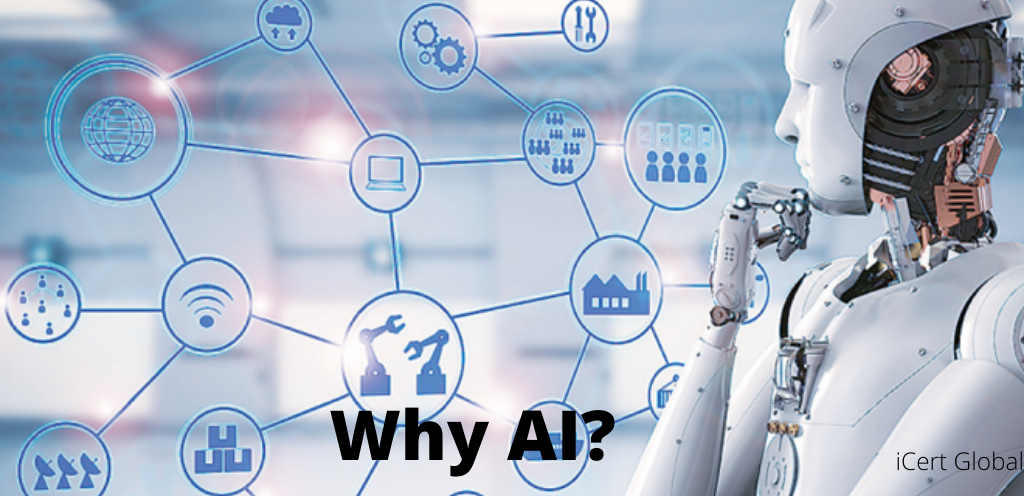
The significance of AI is to help us make an advanced decisions with profound scenarios. Moreover, the tech trend can assist us in having a meaningful life without hard labour and managing a complex web of interconnected individuals.
Let’s see why AI is so important these days:
Existing Product Improvements
AI adds intelligence to the existing services and products. Several products that we come across or use in our routine life are being enhanced with AI potentials, much like Alexa and Siri, which were added as virtual voice assistant features.
To enhance technologies, automation, transforming platforms, intelligent machines, and bots can be incorporated with massive data. If you look at your workplace and home, AI has upgraded the range from security intelligence and intelligent cameras to investment analysis.
Deeper Data Analysis
Leveraging neural networks with several hidden layers, AI will analyze more and deeper data. Developing a fraud detecting system with five hidden layers was once impossible, but not anymore, thanks to supercomputer power and big data.
To train a deep learning algorithm, you need massive data sets to gain insight directly from data.
Automates Iteration Learning
Instead of automating manual works, AI executes frequent, massive, computerized ones. Though humans are vital for the system set-up and queries, AI needs automating iteration learning and discovery through data.
Progressive Learning Algorithms
To enable the data to do all the programming work, AI modifies through advanced learning algorithms. AI finds data regularities and structures so that algorithms can obtain skills. Like an algorithm undergoing self-study to play chess, it can teach itself what product to recommend following online.
Top-notch Accuracy
Through deep neural networks, AI obtains top-notch accuracy. For instance, your interactions with Google and Alexa are based on Deep Learning (DL). These products are getting more precise when leveraged regularly.
In the medical industry, AI methods from DL and object recognition can be leveraged to determine cancer on medical images with enhanced precision.
What are the Different Types of AI?
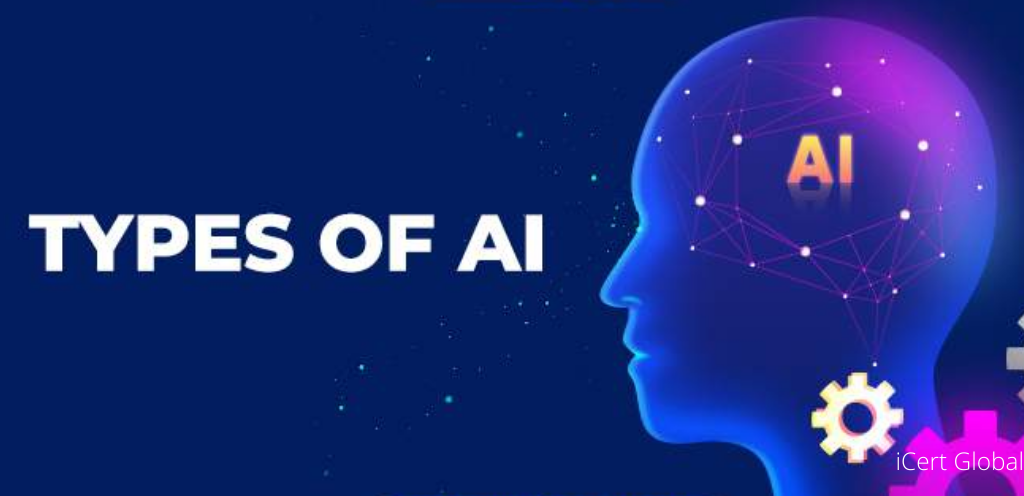
It is significant to note that AI has enabled robots to differentiate images and texts, understand vocal commands, and much more than a person can do. For instance, Alexa from Amazon, Siri from Apple, and Hello Google from Google are AI applications that can easily understand and perform vocal commands.
Given the rate at which ML, DL, NLP, predictive AI, and other related concepts are emerging, it isn't a little dream to expect that a day would arrive when machines would walk among us, seamlessly offering all human actions.
Current AI systems can do complex calculations at a high rate, followed by the ability to process large data sets and generate precise predictions.
In terms of development, AI is divided into four parts:
Reactive Machines
This type of AI is solely reactive, without developing memories or creating judgments based on prior experiences. These devices are designed to execute specific duties. Programmable coffeemakers and washing machines, for example, are built to fulfil particular functions but lack memory.
Let's take the example of IBM's Deep Blue chess computer. It defeated international grandmaster Garry Kasparov six times in a row. The technology could recognize chess board pieces and understand how they moved.
Its superior intelligence allows it to guess all of the opponent's possible movements far faster than a human opponent. As a result, it could compute the best moves for each scenario.
AI with a limited memory
This type of AI makes decisions based on previous experiences and present data. These machines have limited memory and integrated a memory-running application; they cannot generate new concepts.
Modifications in these machines demand re-programming. Limited memory AI is exemplified by self-driving automobiles, where they can monitor the speed and direction of other vehicles.
Mind-Body Theory
These AI computers can socialize and understand human emotions and a cognitive understanding of people based on their surroundings, facial traits, and other factors.
Such powers have yet to be developed in machines. This sort of AI is the subject of a lot of research.
Self-Awareness
This is a type of AI where machines will be equipped with technologies to be self-aware of their surroundings. This phase is also a continuation of the Mind-body Theory phase, in which devices will be aware of themselves for a reason.
This will elevate the machine's intellect to an entirely different level. Though AI researchers have a long way to travel before these machines are in practical use; however, present AI scientists are focusing on enhancing these computers' ML potentials. The potential of devices to respond similarly to humans is increasing each day.
What are the Benefits of AI?
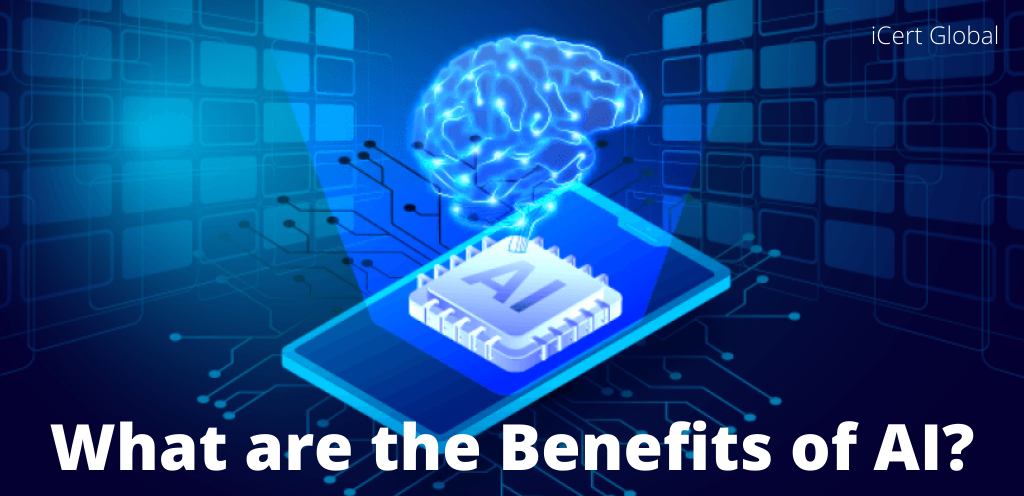
AI has been lingering around us for quite a while now and is a part of our routine life - including web search recommendations to robot attendants at shopping malls.
By integrating AI into every organizational aspect, businesses are getting optimized, gaining a competitive edge, and finally leading to successful profit growth.
AI in business has numerous innovation potential and will continue to transform the world we know today in a wide range of ways.
The top 10 benefits of AI in business are as follows:
1. Global Defense
The most innovative and advanced robots across the globe are being developed with global defence applications. This is one of the reasons why breakthrough techs get first implemented in the military. However, most of them don't see astronomical days.
One example of it is the AnBot, a Chinese developed AI bot with the potential to reach a maximum of 11mph. The idea behind this tech is to patrol areas, and in case a danger spurs up, this bot can deploy an electrically charged riot control tool.
The 1.6m height AnBot can identify individuals having criminal backgrounds. It has contributed to the improvement of security by maintaining a track of malevolent acts around its territory.
2. Solve Complex Issues
Over the years, the AI tech trend has evolved from a basic ML algorithm to an advanced level such as deep learning. The expansion of AI has helped organizations solve complex problems like weather forecasting, cybercrimes, malevolent activity detection, medical diagnosis and many more.
An example of leveraging AI for fraud detection is PayPal, and you may be wondering how?
Well, because of a breakthrough technique - deep learning (DL), the US multinational financial tech giant can now find out the possible suspicious activities accurately. The company processed around $235Bn payments from 4Bn transactions by more than 170Mn users.
ML and DL algorithms do data mining of users' purchase history to determine possible fraud patterns stored in its databases and can tell whether a transaction is deceitful or not.
3. Automation
From tasks involving strenuous labour to hiring procedures, AI can be leveraged to automate nearly anything. There is infinite count to AI-related applications that can be leveraged to automate the hiring process.
Such a system will assist in freeing the workforce from hectic manual tasks and schedules and allow them to shift their attention to complex tasks such as decision-making and strategizing.
A classic example of this type of recruitment is the conversational AI recruiter MYA, which focuses on automating monotonous parts of the hiring procedure, such as candidate screening and sourcing. This technology is trained by advanced ML algorithms and leverages NLP to acquire conversational details.
MYA is also accountable for creating candidate portfolios, executing analytics, and, lastly, shortlisting applicants.
4. Repetitive Task Management
Executing iteration tasks can be a tedious and time-consuming procedure. Leveraging AI for these routine tasks helps us focus on essential tasks requiring immediate actions.
An example is the Virtual Financial Assistant named Erica, used by the Bank of America. This technology implements ML and AI methodologies to serve the customer service demands. Erica does this by developing credit report updates, assisting bill payments and aiding customers with streamlined transactions.
Recently, Erica's potential has been expanded to help end-users make better financial choices by offering them customized insights.
5. Disaster Management
Precise weather forecasting allows farmers to make critical choices about farming and harvesting. It makes shipping seamless and secure. Most significantly, accurate weather forecasting can be used to predict natural calamities that take a toll on millions.
After much research, IBM collaborated with the Weather Company and obtained massive data sets. This alliance gave IBM the chance to access the Weather Company's predictive models, thus offering numerous data to feed into IBM's AI - Watson for prediction enhancement.
The product of this alliance is IBM Deep Thunder, which generates highly personalized data for business clients.
6. Economy
Though AI has been a criticism victim; however, according to the PwC report, it is estimated that AI will contribute around $15Tr to the global economy. By 2030, AI’s continuous advancement will maximize the global GDP by 14 percent.
The report also highlighted that approx $6.6Tr of the expected GDP growth will come from productivity gains of routine task automation and innovative bot developments.
7. Lifestyle Improvements
Since AI's emergence in the 1950s, we have witnessed significant growth in its offerings. We leverage AI-based virtual assistants to interact with other devices to diagnose deadly diseases.
The online shopping platform - Amazon and Flipkart monitors our browsing habits and serves up products it thinks we'd buy. Even Google decides what outcomes to offer us based on our search activity.
8. Productivity
In recent years, AI has been necessary to control highly computing tasks that need maximum time and effort. Businesses these days rely on AI-based applications to increase their productivity and growth.
An example is a Legal Robot that used ML techniques to gain insight and analyze legal documents, find and resolve legal errors, partner with experienced proficient, and many more. It also allows us to compare our contract with others in the same sector to ensure yours is standard.
9. Personalization
Brands that master personalization delivery results in the improved sale by more than 10 percent than other organizations that don't personalize. Personalization can be a tedious and time-consuming task for an individual, but with machines and technologies, these tasks can be simplified.
An example of personalization is the UK-based fashion firm Thread, which utilizes AI to offer personalized clothing suggestions for each customer.
Each week, customers get personalized suggestions that they can vote accordingly. The company uses an ML algorithm called Thimble that utilizes user data to determine patterns and understand buyers' likes.
10. Decision-making
One of the crucial factors that AI must focus on is intelligent decision-making. The technology must help businesses or organizations to make wiser decisions regarding their offered products and services.
A comprehensive AI for CRM - Salesforce Einstein has managed to do effective decision-making. It eradicates the complexity of AI and enables companies to offer personalized customer experiences.
Driven by DL, ML, NLP, and predictive modelling, Einstein is implemented in extensive businesses to identify relevant insights, forecast market behaviour, and make intelligent decisions.
What are AI Applications?
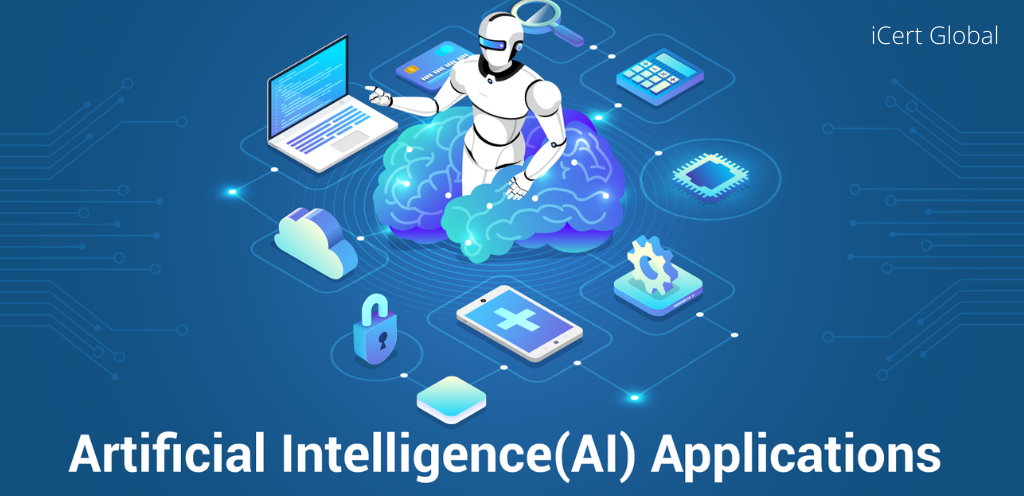
Some of the applications of AI are as follows:
Medical Industry
Medical care is a basic service for all citizens around the world. While doctors and scientists work hard from time to time to bring about a medical revolution, AI does its part by offering great contributions to the sector. The role of AI in healthcare enables machines to interpret the patient’s medical history and predict possible diseases that individuals may be susceptible to in the next few years.
In addition, AI facilitates drug discovery and the development of drugs that can cure harmful and even fatal diseases.
An example of AI in medical industry is IBM Watson Health, a medical company that actively integrates AI into the healthcare industry. It assists in research, data analysis and offers clients with medical solutions.
Customer Service
AI makes it easier to integrate machines into customer service. A computer that is designed to record feedback from various customers visiting major brand stores, shopping centres or showrooms.
ML chatbot technology is one of the best AI applications that simulates the human behaviour and dialogue methods of marketers. The chatbots communicate with customers through online platforms to clear their queries to an extent.
For example, the e-commerce platform Amazon incorporated chatbots into its customer service department. This is where customers are tricked into chatting with bots who want to resolve issues or disagreements related to purchases, orders, etc.
Finance and Stock Market
With the help of AI algorithms, machines can now interpret past stock market developments, analyze the profit and loss of related stocks, and even predict future stock market developments.
The tech been a major contributor in the financial field recently, one of the financial companies, Nomura Group, has successfully implemented AI technology.
In addition, AI is seeking different methods to enter financial processes, such as payment transfers, e-commerce platforms, and many other.
Fitness Apps
Fitness is everything that people desire in the modern world. From the number of steps, you walk in a day to the number of calories you burn, fitness plays a huge role in our lives.
AI has formed an alliance with fitness to promote the launch of fitness equipment, such as fitness bracelets and watches, to help people recognize their health, boost their physical fitness, and achieve goals.
The role of AI is to interpret the data that occurs every day and predict future data based on the data analysis. An example is Fitbit, that trades with fitness bands powered by AI.
About Us
iCert Global is a one-stop solution offering certification training courses in a wide variety of techniques that will give you a head start in this competitive world.
For more information on how iCert Global can help you to achieve your ML, AI and Deep Learning (DL) Certification goals, please visit our website.
We provide instructor-led classroom and online training across the globe, followed by Corporate Training for enterprise workforce development.










Write a Comment
Your email address will not be published. Required fields are marked (*)